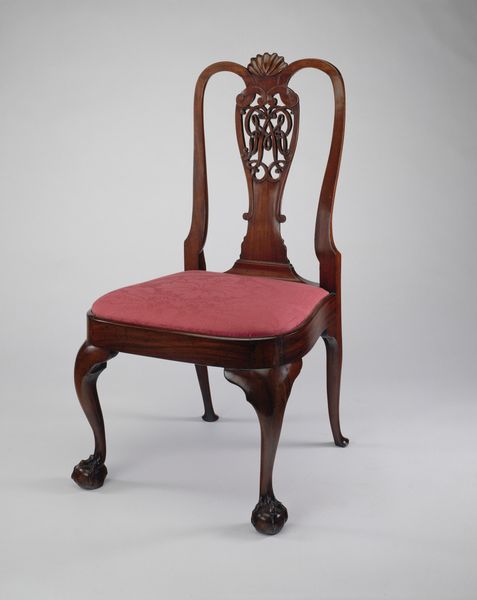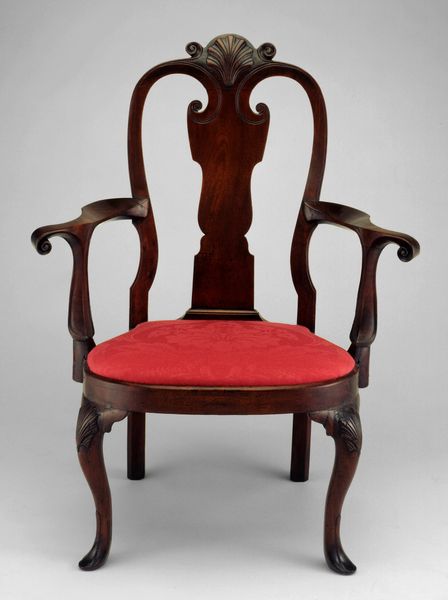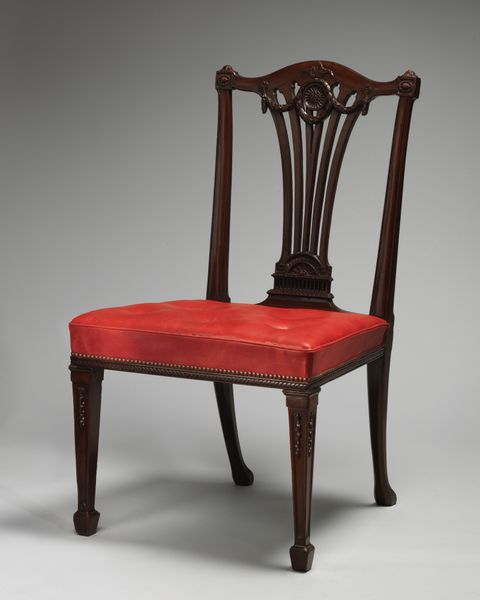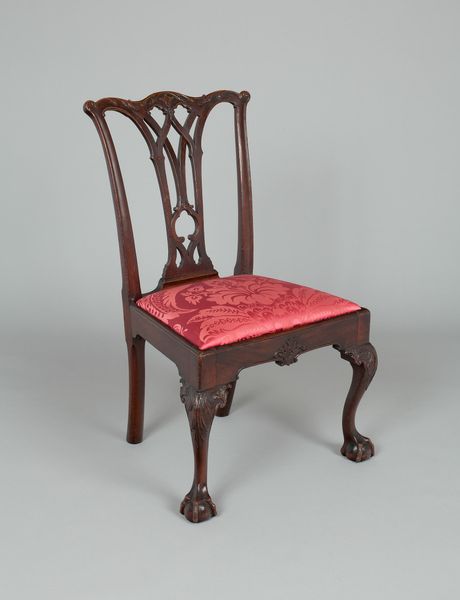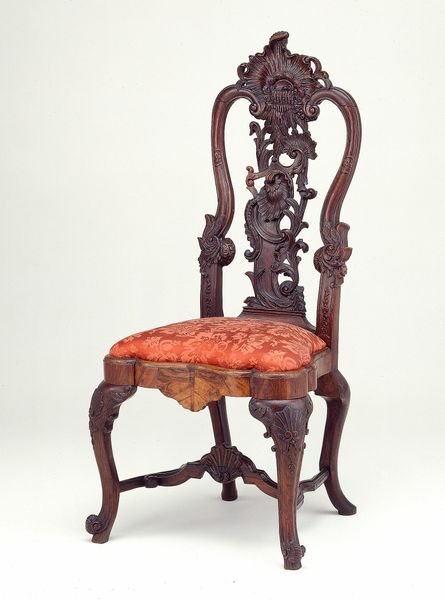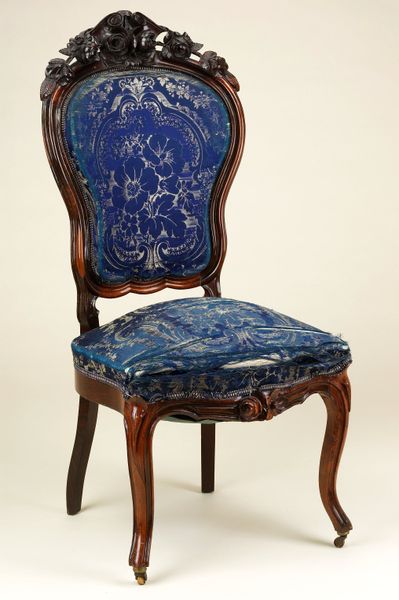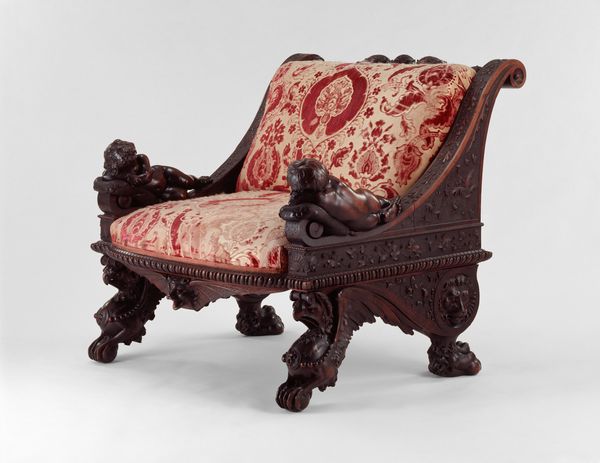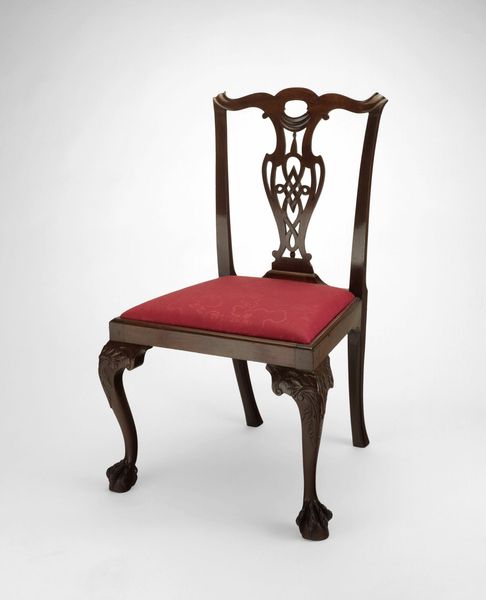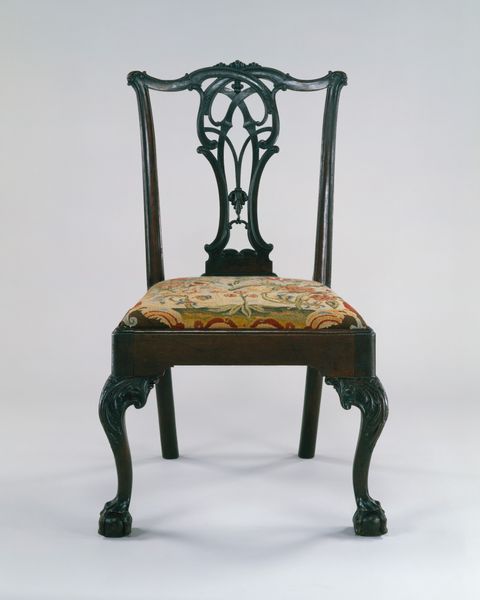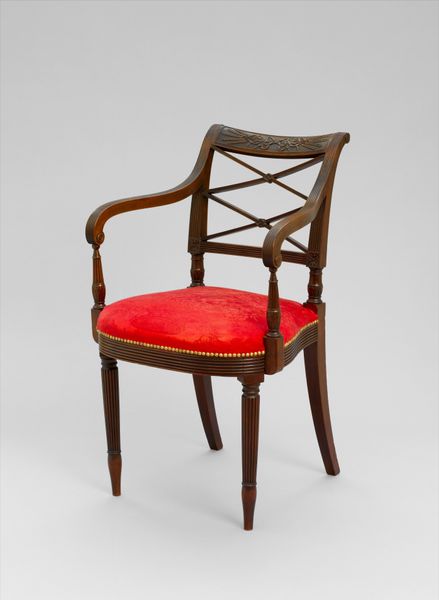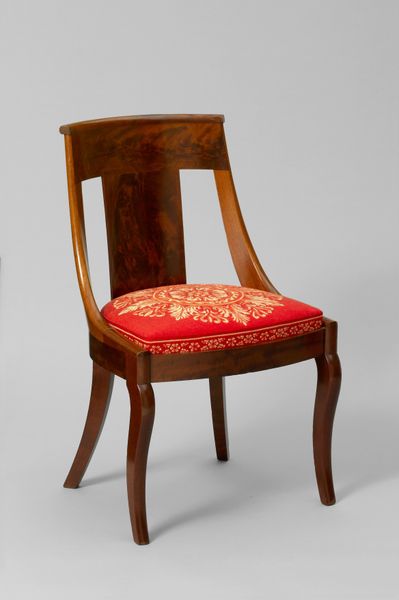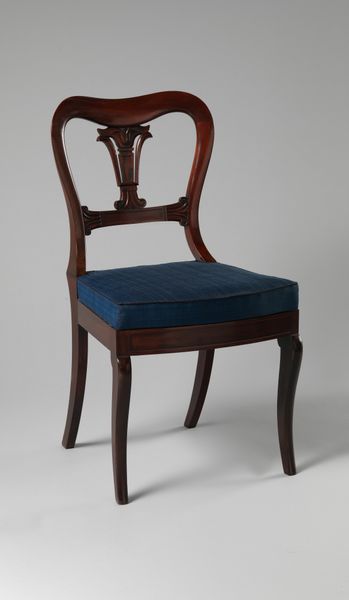
wood
#
furniture
#
ceramic
#
wood
#
decorative-art
#
rococo
Dimensions: 97 × 56.5 × 40 cm (39 1/2 × 22 1/4 × 15 3/4 in.)
Copyright: Public Domain
Curator: Before us stands an elegant side chair, dating back to between 1750 and 1755. The creator remains unknown, but this piece is held in the collection of The Art Institute of Chicago, representing a splendid example of decorative art from the Rococo era. Editor: It's quite ornate! I'm immediately struck by the claw-and-ball feet and the shell motif; the color of the upholstered seat also pops against the dark wood. There's a real sense of playful sophistication here. Curator: Indeed. Chairs such as this were statements of status. Their display in homes sent visual cues about the owner’s refinement and connection to contemporary trends. The Rococo style was gaining momentum, and furnishings like this mirrored that. Editor: The Rococo certainly comes through in the swirling patterns carved into the back. The shell on top radiates status and hints at journeys to exotic locations. There’s a real sense of optimism in its form; not only power but elegance and grace. Curator: And think about the craft involved! These pieces were typically made within workshops, exhibiting the labor of artisans responding to a clear aesthetic demand within elite circles. They reflect shifts towards interior decor and a more focused visual culture. Editor: What is most intriguing is the animalistic carving into the foot. Notice how those paw-like feet ground this refined object in the bestial. The seat invites, and the shell refers, while the clawed feet insist, perhaps reminding its occupant to wield its influence with animal cunning. Curator: An interesting take. The Rococo, especially in furniture, marks a change in society and domestic life as new emphasis began on interiors. The ownership of fashionable furnishings broadcast social standing. Editor: It's truly fascinating how this chair, seemingly simple in function, speaks volumes about status, aesthetics, and cultural values of its time. It definitely offers an insight into what was important at the time. Curator: It does that by echoing sentiments about what it meant to own, possess, or lay claim to an elevated rank in a colonial empire in decline. So many values held, projected and even weaponized. Editor: Thank you, those contextual details are so rich to take away!
Comments
No comments
Be the first to comment and join the conversation on the ultimate creative platform.
